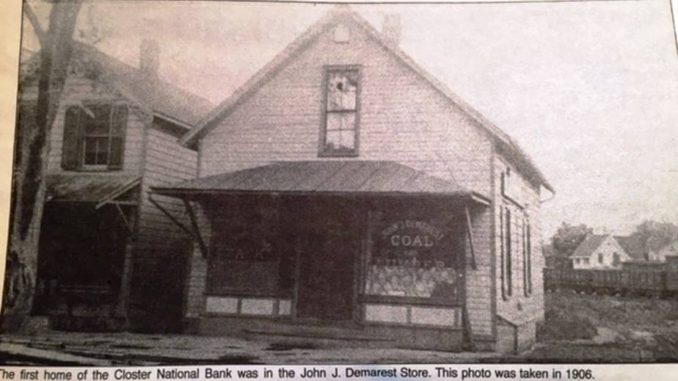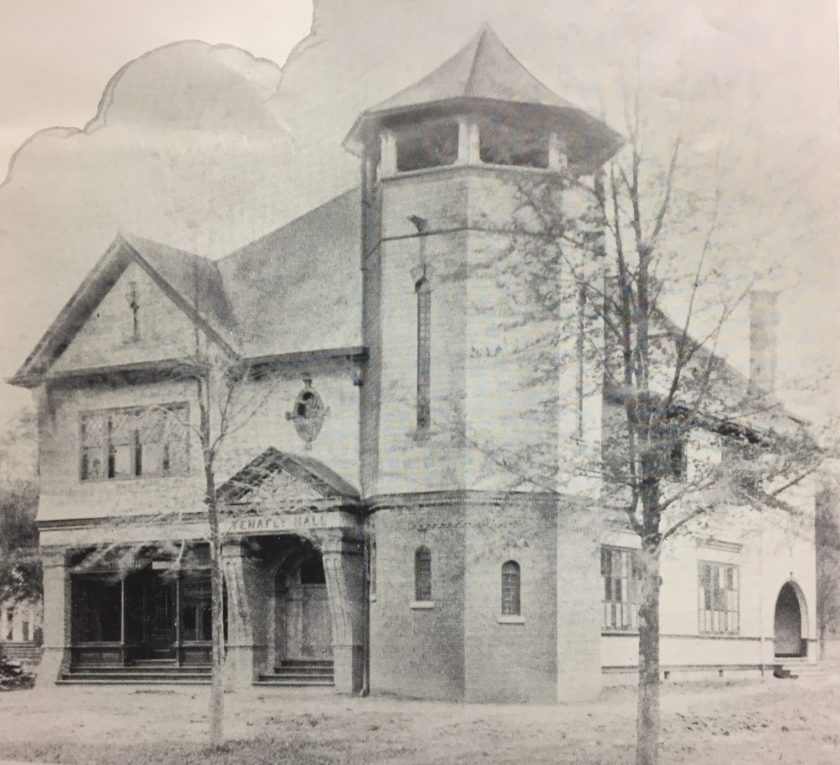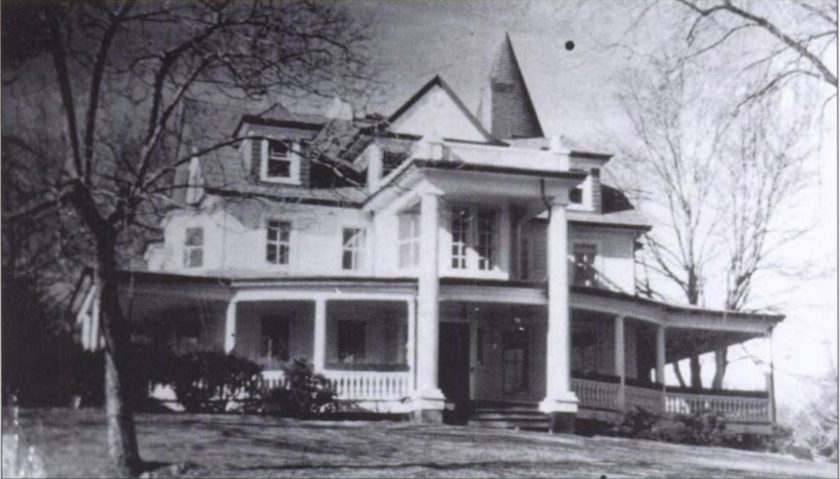

BERGEN COUNTY, N.J.—At the beginning of 1908, the Pascack and Northern valleys were experiencing a rash of burglaries. The rather brazen criminals targeted homes, businesses—even the Closter National Bank, where there was a shootout.
“Marshal William Allen of Closter proved a match for three masked robbers yesterday morning, whom he found preparing to break into the National Bank there,” The New York Times reported Jan. 8, 1908. “The marshal heard the men in the brush near the bank, and made for them with a dark lantern in one hand and a club in the other.
“Suddenly the two masked men dashed out at him, and with leveled revolvers ordered the marshal to throw up his hands. Instead, the marshal drew his own revolver just as the robbers fired and two bullets whistled alongside his head,” it continues.
Marshal Allen backed away as he returned the robbers’ fire, and shouted for help (of course, this was years before police radios). Closter citizens, armed with shotguns and revolvers, came to the marshal’s aid and pursued the robbers for quite a distance, but the criminals ultimately escaped.
On Jan. 13, townspeople from across eastern Bergen convened at the Tenafly Hall in Tenafly to discuss the crimes and how to protect against future attacks.
Unfortunately it seems the perpetrators got wind of the meeting and made use of so many people being away from home at once.
The burglars hit eight Cresskill houses that evening and gained entry into all but one, where a watch dog put them off. At one house, which belonged to retired merchant William Westervelt, the thieves got three gold watches and a sum of cash. John J. Demaris, a retired dry goods merchant, was missing $200 cash (equivalent to over $5,000 today) after the burglars visited his place. Andrew Haring, who was sleeping when the burglars struck at his home, awoke as the men were fleeing and shot at them from his bedroom window.

On Jan. 20, news outlets in New Jersey and New York reported that the towns were collaborating to put a price on the burglars’ heads: $125 to $250, depending on the level of danger involved in the capture.
The added heat didn’t impede the criminals much—they struck at four houses in River Vale on the night of Jan. 21.
“River Vale is greatly excited today over the visit last night of a gang of burglars who left a trace of their presence in four of the finest dwellings,” The Evening World of New York reported Jan. 22, 1908.
In each case, and quite chillingly, the burglars worked downstairs, ransacking in search of valuables while the occupants slept upstairs. Mail delivery man Charles Perry was hit the worst. From his home the thieves stole jewelry and a significant sum of cash—$350, equivalent to nearly $10,000 today.
While they worked quietly, evidence from the home of L.W. Prentice, head of a printing company, indicated the burglars were in no great hurry.
“That the burglars worked leisurely and without fear there is no doubt, as the remains of what were two roast chickens were found on a table in the kitchen of Mr. Prentice’s home,” the Evening World reported.
At the residences of Col. E.A. Havers (a photography supply dealer) and Julius Kessler (wealthy head of a distilling firm), the criminals went for good cigars and costly wine, respectively.

There were burglars picked up in various Bergen County towns in the ensuing months, each charged with smaller thefts. Most notably, John Brown and George Roberts were picked up after their presence on Palisade Avenue in Englewood during the pre-dawn hours made police suspicious. When approached, the men started to run. An officer shot Brown in the foot. Proceeds of a Tenafly burglary were found on his person.
However, police were never able to pin the crime spree of January 1908 on any individuals in particular.
